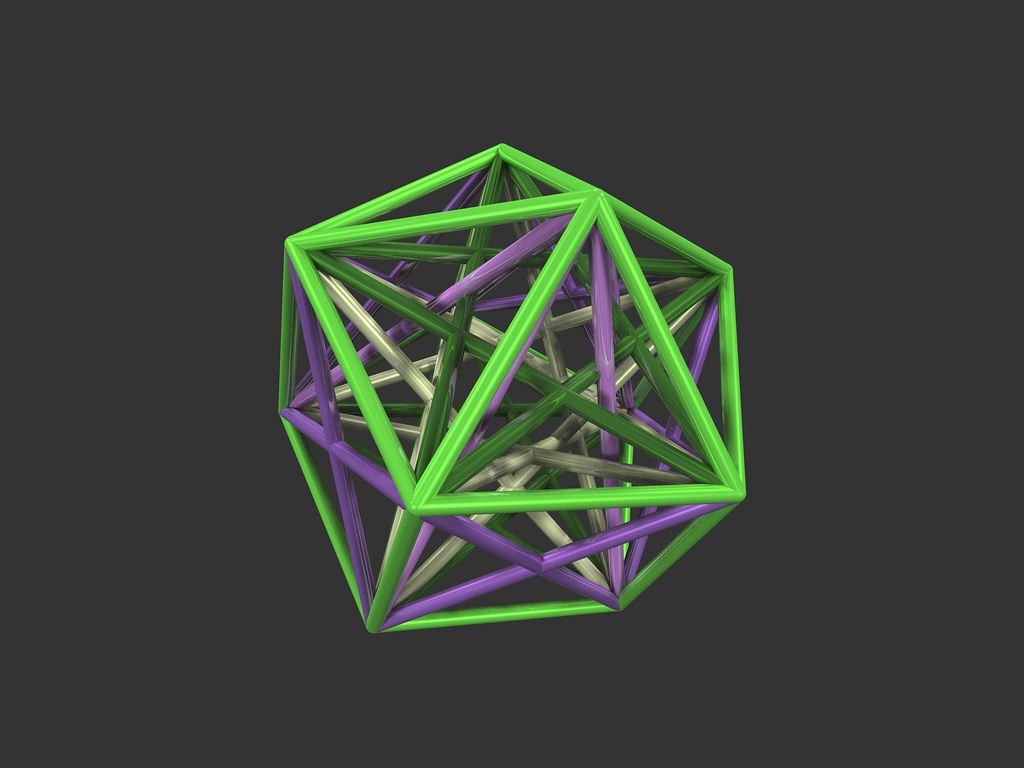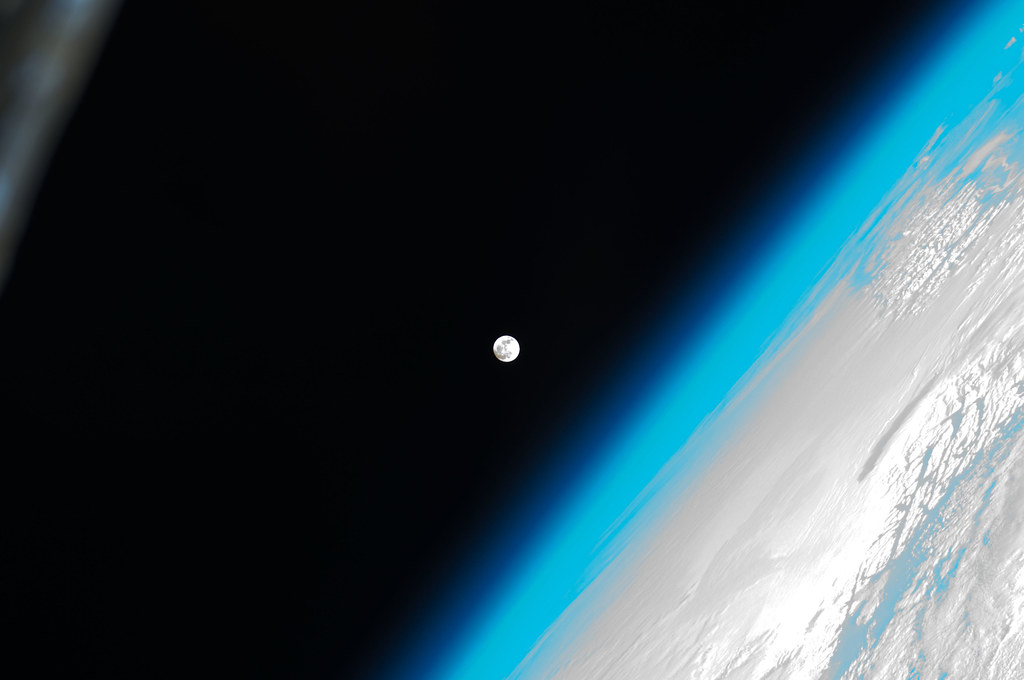Image credit: “Earth Day 2 (Aurora Australis and Bright Star Achernar),” by NASA, on Flickr.
When I started writing this post (several weeks ago!), I was aiming to answer the question posed in the title. I even thought I knew what I was going to say.
But — fortunately or unfortunately — these ideas are pretty complex. To write this post, I had to rethink my stance on some things I’ve said earlier in the semester. And that rethinking left me with even more questions.
In the very first post on this blog, I asked,”Is math fiction?” In that discussion, I defined math as “the science of patterns.”I’m not sure about that anymore.
Over the course of this year, I’ve written about math as a way to express relationships between things, as an exacting search for truth, and as a source of both cute puzzles and far-reaching ideas. In the post before last, I described my own deeply personal experience of math.
To my mind, “the science of patterns” is too vague to capture mathematics.
There is a sweet spot in the world of patterns that gives rise to good math. Good math is “interesting.” That term, “interesting,” gets thrown around by mathematicians a lot. It refers to a feeling people have about certain ideas and not other ideas, a feeling used to decide which patterns are worth studying.
Some “patterns,” like those of an argyle quilt, are too simple and lacking in meaning to be of interest to mathematics. Other logical structures are too complicated and discordant to be interesting. Not all patterns are math. And not all math is patterns.
Here is another possibility: because math is held to strict logical standards, one might try to define math as the study of logic. But math is more than pure logic. Just as important are guesswork, intuition, and creativity. If one is inclined to compare math to art, then logic could be called the medium of mathematics. It’s the paint, the charcoal, the clay, the language. If your image is not made from paint, it’s not a painting; if your idea is not logically consistent, it isn’t math. But the choice of what math to study — of which patterns to draw out, and which to leave be — is often a matter of taste. I don’t know any mathematician who feels he is grinding out dead logical statements.
I know mathematicians who study because they are curious about ideas, because they find them elegant or cute or perplexing and want to know more. A “nice” mathematical idea tugs at a person’s mind in a pleasant way.
I hope this blog has shown that side of math to people who didn’t know about it. Math is more than a tool to “feed big numbers into computers for some reason or other” (as Lockhart puts it). It is not just something people do to be smart or cryptic. It’s something people do because it’s fun, because they’re curious, and because it’s beautiful.
Personally, I think that joy is an amazing thing to be exposed to when you’re studying in a field.
Now, back to the original question.
Does that make math art?
Art is tricky to define. Perhaps Hardy, Lockhart, and others are simply using the term loosely. Or perhaps they see math in a way that I’m not advanced enough to see yet.
But I would say no. I don’t think math is art.
Still, I’m not done thinking about it. I haven’t really defined math, and I haven’t really defined art. This is only the beginning of a thought.
What do you think? What is math? Why do people do it? Is math art? Is “is math art” even a meaningful question?
Let me know what you think in the comments. Or ask something different. There are a lot more interesting questions to be asked, and we don’t have answers yet for most of them.
Isn’t that fun?






I think “art” is just any composition of creativity. There are aspects of math where one can use creativity to fulfill his objective. For example, there are many ways a mathematician can go about solving a certain problem (long ways, short cuts, and maybe even ways that were not thought of yet). Now, one can argue that since creativity is being used in this area, it is deemed as an “art.” But I think math is more of the means of getting there, like you stated in your post. The math itself is not the art; it’s what you can do with the math. Math is a tool that can be used to create masterpieces. And just to expand a bit on your paint metaphor: the paint itself is not the art, but it is used to create the art, and without it, there would be no art.
When we argue about whether math is art or isn’t, is math be the subject of our discussion? No; we’re discussing the meaning of the word “art.” There’s nothing wrong with that, as long as that’s what we understand ourselves to be discussing. When we resolve that argument, either agreeing on the meaning of the word “art” or identifying the point where our respective understandings diverge, we again take up math and see if it fits the bill. But what won’t contribute to our understanding of math; we’ve just assigned a label to it which may be useful in other discussions. Assigning that label – or not doesn’t further our understanding of math; rather, it’s dependent upon an understanding.
I question the existence of a definitive category of mathematics. It seems that whenever we can translate thoughts into precisely defined symbols, and that language of symbols is more useful for communication than natural language, we call that math. But is topology categorically related to formal logic to probability to calculus in any definitive way? I don’t think so.
To synthesize those two thoughts, no matter how you define art, I’d imagine you’d find that math is neither art nor is it not art. Sometimes an artist and sometimes a scientist might choose a precise symbolic language as his medium. In both cases, he’d be using math, but in one, for the sake of his art, and in the other, for the sake of his science.
Ken, I hear. That’s why I kind of sidestepped the question — I’m not really interested in defining art per se.
Also, you say, “It seems that whenever we can translate thoughts into precisely defined symbols, and that language of symbols is more useful for communication than natural language, we call that math.” That sounds to me like you *are* defining math, just in terms of its form instead of its content.
Interesting points.
Ken might be touching on this but I think the discussion could be clarified a bit if we had an intellectual pursuit we could agree was *not* art. If were using the term art in a vague enough way that all intellectual pursuits are art then yeah, obviously math is an art but we haven’t really said anything meaningful. So, for example, let’s say that chemistry is not an art (no offense to the chemists out there). I don’t really think any science is an art but for concreteness sake let’s say chemistry.
For this reason I disagree with Dassa’s argument about why math is an art. Creativity can be used in almost any intellectual effort. The chemist may have the problem of synthesizing a compound and there is no clear way of going about it. They can use a substantial amount of creativity in coming up with a solution but I don’t think that makes chemistry an art.
To me, the most compelling argument that math is an art comes from both subject’s dependence on an “aesthetic appeal”. What I mean by this is that mathematicians define concepts/things. They say things like “we define a collection of objects to be a set” and “if the objects the following properties we call that set a group” etc. They also prove theorems about the objects they’ve defined, e.g. “All groups that have the following property X must also have property Y”. However, there is no real practical goal in mind when making these definitions. The mathematician is not trying to solve a real world problem. He’s motivated to make these definitions because these objects seem “natural” and have an appeal to them. In the same way that the artist produces things that are visually appealing, the mathematician creates concepts and objects that are “intellectually appealing”.